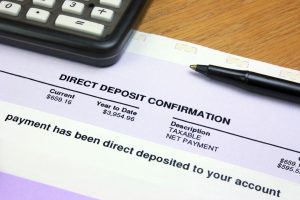 The United States Department of Agriculture, the USDA, sponsors multiple programs designed to assist those living in rural areas. One of the more important programs is the program helps low to moderate-income individuals buy and home with little to no down payment.
The United States Department of Agriculture, the USDA, sponsors multiple programs designed to assist those living in rural areas. One of the more important programs is the program helps low to moderate-income individuals buy and home with little to no down payment.
With conventional financing, such as those underwritten to Fannie Mae or Freddie Mac guidelines, it can be difficult for a property to be approved. Like other mortgages, both the individual as well as the home must follow certain standards.
Homes must be located in eligible, specific areas. These areas ultimately deemed rural are designated so with information drawn from the Census Bureau. In general, about 3 percent of the land area in the United States is populated and makes up more than 80 percent of the population.
Conversely, the other 97 percent of the land area is considered rural, and less than 20 percent of the population lives there. As you may be aware, the U.S. Census is taken every 10 years.
The last Census was taken in 2020 and the next one will be in 2030. But a lot can happen during that time in between. An area that was declared rural in 2020 may not be so rural today. As urban and suburban areas expand, eventually an official rural area looks nothing like a rural area. New developments, schools, and businesses crop up in places where the USDA loan can be used because the data is so old.
Buyers won’t be able to use the USDA mortgage in a major urban area like Atlanta, Chicago, LA, Dallas, etc, but some of the outlying areas may certainly be eligible. Borrowers can see the approved housing USDA map here. The designation comes from the U.S. Census Bureau and because the information is almost 10 years old, you might be surprised where the USDA loan is an option.
Using a USDA loan to finance a rural property provides competitive, 30-year fixed rate terms but another attractive feature is the lack of a down payment. USDA loans do not require a down payment at all. The only other zero-down loan is the VA mortgage program which is reserved for veterans and certain members of the military.
USDA loans have no such restrictions regarding membership, anyone can apply for a USDA loan. As long as the income and location requirements are met, the USDA loan can be an option.
 Now let’s talk about income requirements. Because the USDA loan is reserved for low-to-moderate income buyers, there are specific limits placed on the amount of household income used. Note this is all of the household income for all occupants 18 years and older, not just the income of those on the loan application.
Now let’s talk about income requirements. Because the USDA loan is reserved for low-to-moderate income buyers, there are specific limits placed on the amount of household income used. Note this is all of the household income for all occupants 18 years and older, not just the income of those on the loan application.
In most parts of the country, the maximum income limit for a 1-4 member household is $110,650 for 2024. For a 5-8 member household, the limit is increased to $146,050. In so-called “high-cost” counties, the income limits can be even higher.
Income is verified in a traditional manner just like other loan programs. Borrowers will be asked to provide their most recent paycheck stubs covering a 30-day period along with the last two years of W2 forms. For self-employed borrowers, the last two years of income tax returns and a year-to-date profit and loss statement will be needed. And while there is no down payment, all mortgage loans have closing costs.
The lender will want to see verification that you have enough funds in an account that belongs to you to cover these costs. Your loan officer can provide a list of estimated fees at your request.
If you live in an area that is apparently rural or in a suburb, make sure you ask your loan officer about the possibility of financing the home with a USDA loan. Competitive rates and low closing fees make for a very attractive offering. The program is an excellent choice for those wanting to close with as little down as possible and still be offered competitive interest rates.
Contact us to learn more by calling the number above, or just fill out the Quick Contact Form on this page.